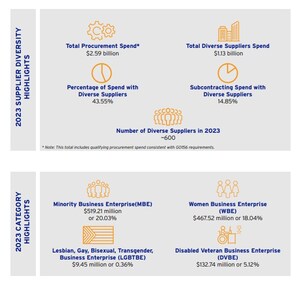SAN DIEGO, Jan. 22, 2021 /PRNewswire/ -- Two years after becoming the first battery of its kind to be connected to the California grid to help support reliability and maximize the use of clean energy, the vanadium redox flow (VRF) battery based at a San Diego Gas & Electric substation is again breaking new ground. This time, the emerging battery technology is being tested as a means to help achieve zero-emission microgrids – a tool to keep communities and critical facilities powered with clean energy during adverse weather conditions and Public Safety Power Shutoffs. (Videos and Photos Available Here)
With the support of Japan's New Energy and Industrial Technology Development Organization (NEDO) and the California Governor's Office of Business and Economic Development (GO-Biz), SDG&E and Sumitomo Electric (SEI) launched the demonstration project in 2017. The collaboration was recently extended for another year through the end of 2021, to further test the battery's microgrid capabilities and maximize its ability to support the grid with ancillary services such as voltage and frequency regulation. Unlike the most prevalent energy storage technology (stacked cells of lithium-ion batteries), the flow battery being tested consists of tanks of liquid electrolytes and pumps. It began participating in the California Independent System Operator's (CAISO) wholesale electricity markets in December 2018 and was used last summer to help minimize the impact of rotating outages during a record heatwave.
"Long-duration energy storage and microgrids are both key to helping California meet its clean energy, reliability and resiliency goals. We need breakthrough technologies to achieve 100% renewable energy on our grid and to power microgrids during emergencies," said SDG&E CEO Caroline Winn. "SDG&E is proud to play a role in developing innovative solutions, like the flow battery technology, to help solve California's climate-related challenges."
Flow battery systems have an expected lifespan of more than 20 years and could have less degradation over time from repeated charging cycles than other chemical battery technologies.
"This project is cutting-edge and serves as the proving ground for integrating flow batteries into microgrids," NEDO Executive Director Sato Yoshiteru said. "We are determined to contribute towards developing innovative solutions to environmental and energy challenges, such as improving grid reliability, which are among the most important issues for the State of California."
"I'd like to express my deepest gratitude to GO-Biz, San Diego Gas & Electric and NEDO for implementation of the Sumitomo flow battery in California. This is a reliable, long-duration technology that offers a high degree of operational freedom and fire safety, using non-flammable and re-usable electrolyte. Based upon these advantages, I'm confident the flow battery contributes to grid reliability in California. I am determined to help California reach its clean energy goals. I look forward to continuing our partnership with San Diego Gas & Electric," said Hideo Hato, Senior Managing Director of Sumitomo Electric.
In 2015, NEDO signed an agreement with GO-Biz to test flow battery performance in a demonstration setting. NEDO then contracted with Sumitomo to implement the project. The flow battery provides 2 MW/8 MWh of energy, enough to power the equivalent of about 1,000 homes for up to four hours.
"California has proven time and again that addressing climate change is good for our environment, it's good for future generations, and it's good for our economy – spurring new technologies and creating new markets on a regular basis," said Tyson Eckerle, GO-Biz's Deputy Director of Zero Emission Vehicle Market Development. "We continue to be proud international partners with NEDO as this game-changing technology brings new opportunities and renewed economic growth through renewable energy."
Since unveiling the project in 2017, SDG&E has been researching if flow battery technology can economically enhance the delivery of reliable energy to customers, integrate growing amounts of renewable energy and increase the flexibility of grid operations. Like other energy storage systems, the flow battery absorbs or releases electrons as needed to help maintain grid stability. For example, soaking up surplus solar energy generated in the middle of the day and discharging it to the grid during peak evening hours.
SDG&E has been a leader in integrating energy storage, as well as developing microgrids. In 2013, SDG&E began operating the first utility-scale microgrid in America – the Borrego Springs Microgrid. Last year, it received a federal grant to upgrade the Borrego system to run on 100% renewable energy. In 2017, SDG&E unveiled what was then the world's largest lithium-ion battery storage facility. To date, SDG&E has about 100 MW of energy storage projects completed or contracted and is working to add more.
SOURCE SDG&E

WANT YOUR COMPANY'S NEWS FEATURED ON PRNEWSWIRE.COM?
Newsrooms &
Influencers
Digital Media
Outlets
Journalists
Opted In





Share this article